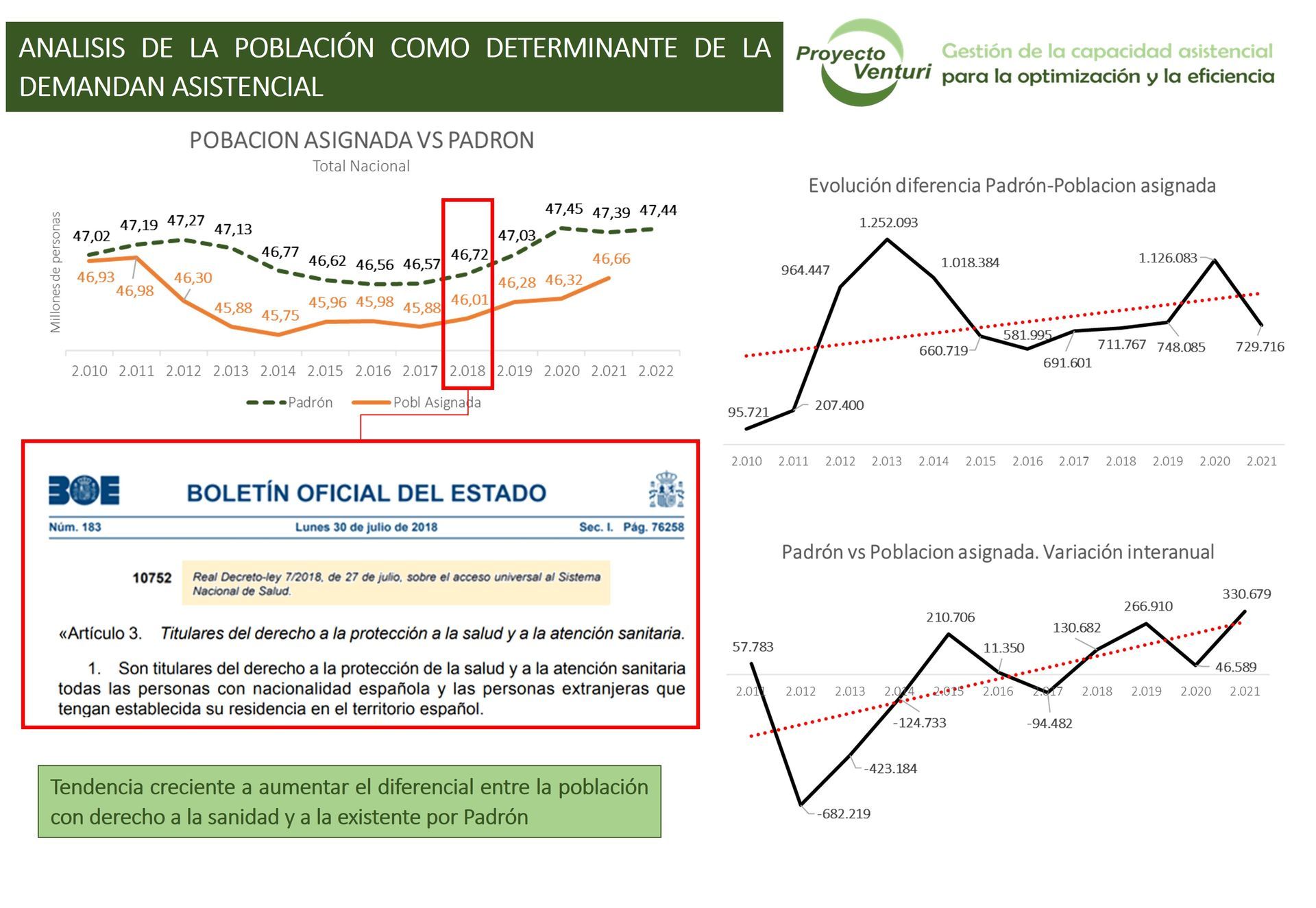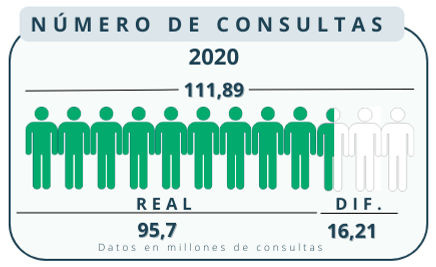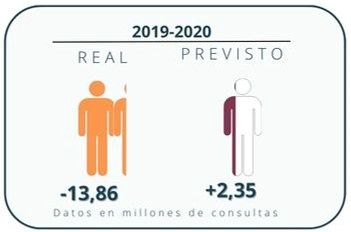LINE 1
RESPONSE TO THE DEMAND FOR ASSISTANCE
Demand must always be managed
- Quantify it
- Know its dynamics and determinants
- Predict it
- Manage it

ANALYSIS OF SOCIAL AND POPULATION REALITY
Know the population and social reality

Demand is determined by the population to which care is needed, its true reason for being.
Their analysis and in-depth knowledge are essential to interpret and determine consequent demand data.
The objective is to understand both its structure and its movements and evolutions.
Assigned population is not the same as registered population. The population stabilizes at the highest levels of the historical data analyzed.

In 2018, a decree was enacted seeking to restore universal healthcare. Since then, the gap between the registered population and the insured population has tended to widen. However, the last year on record saw a significant decrease in the gap.
SPECIAL FILE: SPECIALTY CONSULTATION
Specialist consultations, along with primary care, are a critical component of any healthcare system, as they are where clinical decisions are made that determine the path each patient will follow: length of stay, intensity of diagnostic and therapeutic resources, etc.
This is where resource needs arise at other points in the care process. And where tremendous efficiencies can be achieved. For example, greater efficiency in primary care and resolution capacity will reduce care pressure in specialty consultations. And this is the main bottleneck.
Dossier developed in different advances and their components
01
ADDITIONAL public and private dependency
02
Public dependency
03
Private dependency (In development)
04
COMPARED Public and private (In development)
PREVIEW 1: HIGHLIGHTS
Quantifying the impact of the pandemic
In 2020, 16.21 million fewer specialist consultations were carried out in the Spanish healthcare system than expected.

A constant increase
Nearly 2.5 million more consultations each year...until 2019

The pandemic resulted in a reduction in activity of almost 14 million consultations...compared to the expected increase of 3.35 million.


Waiting time data is highly relevant, as it reflects a healthcare system's ability to respond to patients' healthcare demands.
The capacity needed to respond to the healthcare demands of a population is the aggregate of each individual's needs. This intensity of care required by a patient stems from their pathology, but above all from the clinical decisions that determine the number of steps the patient will take in their care process. Therefore, the duration of their process. And here, there is much room for improvement and optimization through proper disease management from an integrated perspective.
The cumulative effects of all these factors can lead to waiting times for care that exceed what is emotionally and clinically acceptable. This issue must be considered when interpreting and assessing data on these waiting times. Clinical and emotional intolerance do not necessarily occur simultaneously. Clinical situations that endure waiting without emotional problems can pose burdens that lead to other types of complications, and even the emergence of other problems.


